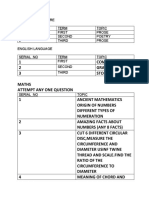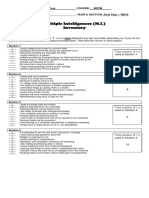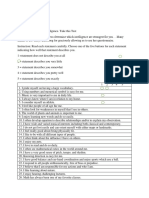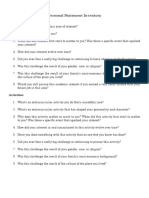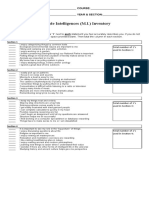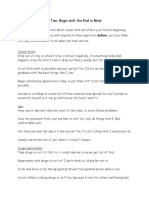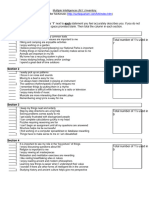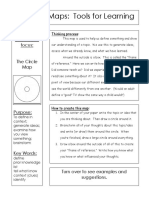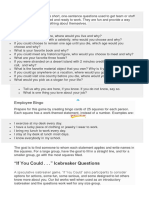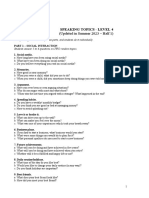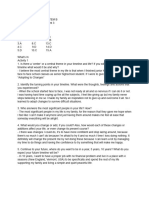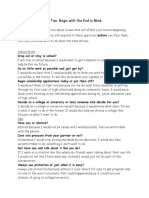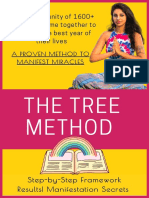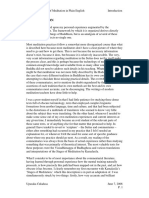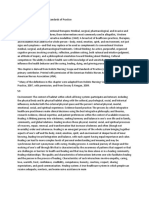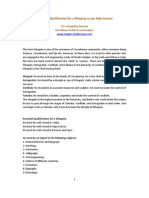Identify Patterns:
Finding Your Pattern
Overview
Being able to recognize patterns enables you to make sense of the world; to interpret data;
recognize commonalities among seemingly unrelated situations; and frame novel problems in
familiar terms.
Pattern recognition has an almost infinite number of applications in fields as different as
technology, business, medicine, statistics, mathematics, and graphic design.
Directions
For this assessment, you will use your pattern identification ability to recognize patterns in one of
the most important topics of all: YOU.
Scenario-It’s your final semester. You could go on to graduate school, you could increase your
hours at the job you’ve had in school; maybe you could teach English overseas. But you’re just not
sure which option is really you. How do you make sense of it all?
The first step is generating the data. Give yourself a chunk of undistracted time to answer the
eleven questions below. If you’re a visual person, feel free to draw and/or include photos. For
each question, ask yourself: What does this reflect or say about my goals, values, aptitudes, personal
style and or interests?
The second step is looking for patterns. Create a mind map by drawing or using a digital tool. Put
the activity you identified in questions 7-11 in the center. Link it to other activities you’ve enjoyed
throughout your life or hope to do in the future.
https://www.visualthinkingmagic.com/pattern-recognition
The final step is a reflection on the patterns you’ve discovered: common themes.
�Rubric
Criterion Description Yes Not Yet
Answers questions in depth You give thorough and thoughtful
responses
Identifies patterns using mind You utilize the mind map platform to
map identify patterns
Provides thoughtful reflection You reflect on the meaning of the
on patterns patterns
Pattern Questions
1. You are about the check out from the store when the cover of a magazine or newspaper
catches your eye. What is it? What about the topic or title interests you? Have you read it before?
Do you read it regularly?
2. Think back on being in 3rd grade. What was your favorite toy, game or activity? Which people
did you like or admire the most? What did you like about them? What did you want to be when
you grew up?
3. Think about early high school. What was your favorite thing to do? What was your least
favorite? Who were the people you liked or admired the most?
4. Now: What is your favorite thing to do? What is your least favorite? Who are the people you
like or admire the most?
5. Imagine you are free to live anywhere in the world. Where do you live? What do you do there?
Who else is there?
6. Describe a time you volunteered or helped someone else. What did you do? Why did you do
that particular thing?
7. Think about some activity from leisure, education, or work which is particularly enjoyable.
Describe a specific time when it was very enjoyable and a time when it was less so.
�8. Begin with the time when it was very enjoyable. Who were the people involved? What were
you feeling? What were your thoughts? Were there any challenges? Any successes? What was
your motivation for engaging in the activity?
9. Move on the time it was less enjoyable. Who were the people involved? What were you
feeling? What were your thoughts? Were there any challenges? Any successes? What was your
motivation for engaging in the activity.
10. What was the difference between the enjoyable and less enjoyable times? What made it
different?
11. Imagine engaging in this activity in the future. What if anything would you change?




